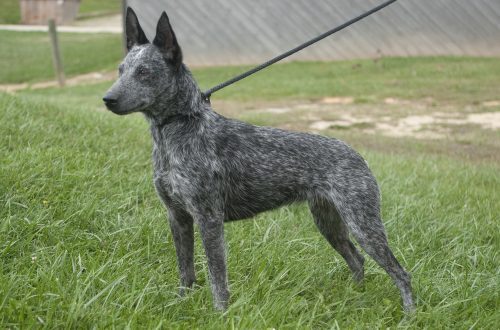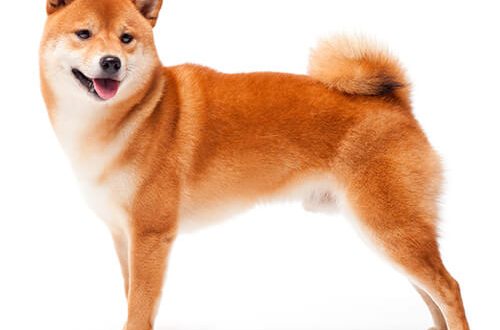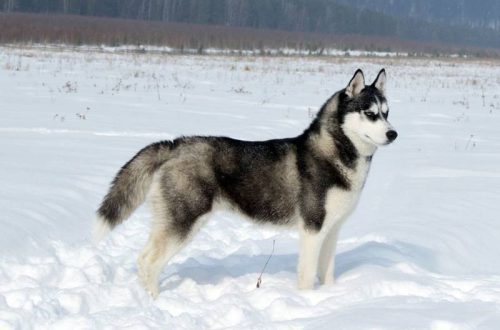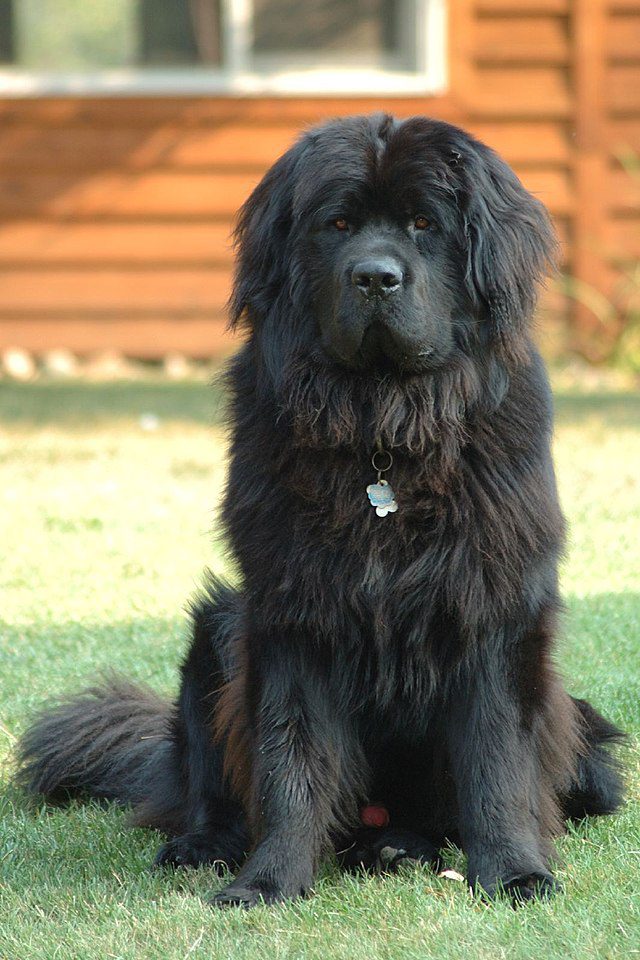
Newfoundland Dog
Other names: diver , newf
Newfoundland is a huge powerful dog with spectacular appearance and great character. The purpose of its existence is to serve people.
Contents
- Characteristics of Newfoundland Dog
- Basic moments
- History of the Newfoundland dog breed
- Video: Newfoundland
- Appearance of the Newfoundland
- Newfoundland photo
- Newfoundland character
- Newfoundland Dog Education and training
- Care and maintenance
- Newfoundland health and disease
- How to choose a puppy of Newfoundland Dog
- Photo of Newfoundland puppies
- How much is Newfoundland
- Newfoundland Dog – Video
Characteristics of Newfoundland Dog
| Country of origin | Canada |
| The size | large |
| Growth | 64–70 cm |
| Weight | 50–54 kg |
| Age | up to 10 years |
| FCI breed group | Pinschers and Schnauzers, Molossians, Mountain Dogs and Swiss Cattle Dogs |
Basic moments
- A distinctive feature of the breed is a passion for water. Newfoundlands are able to dive, make long swims, they are unsurpassed rescuers of drowning people.
- Newfoundlands are characterized by high socialization and genuine heroism. Many animals are in the service of the police, military units, work as guides.
- Dogs are very friendly, they enjoy communicating with people, including strangers.
- With adult family members, Newfoundlands behave on an equal footing. The kids are treated patronizingly, protect them and patiently endure annoying pestering.
- They are attached to other family pets: from parrots to cats. They do not experience aggression towards foreign animals and try to establish friendly relations.
- The benevolence of the Newfoundland will not allow him to be a guard dog, he does not have an innate aggressive reaction to strangers, he needs time to assess the situation. However, sensing the danger to family members and homes, these dogs repulse the enemy with lightning speed.
- They have high intelligence, excellent memory, quick wits, and surprisingly know how to predict the desires of the owner.
- Representatives of the breed are polite and delicate, but they absolutely cannot stand criticism in relation to themselves, they do not tolerate screams and rude orders. Physical punishment of these dogs is unacceptable, resentment will leave an indelible mark on their memory.
- Newfoundlands are characterized by a measured lifestyle, they are not too mobile, so their activity should be stimulated. The best way is to provide them with the opportunity to swim, play in the water.
- They need regular grooming for their luxurious thick coat.
- Adapted to life in city apartments, but it is desirable that the area of \u200b\u200bthe room be larger than average. Ideal conditions for keeping a Newfoundland are a country house near a pond.
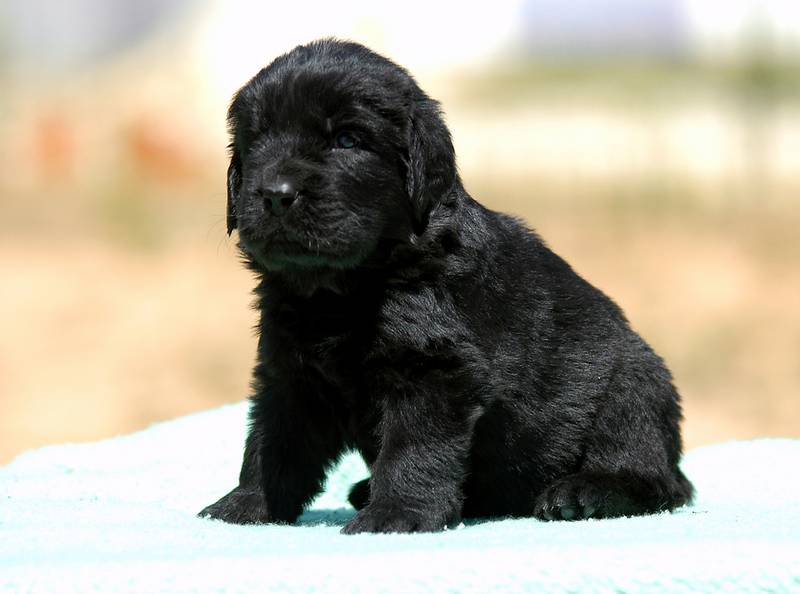
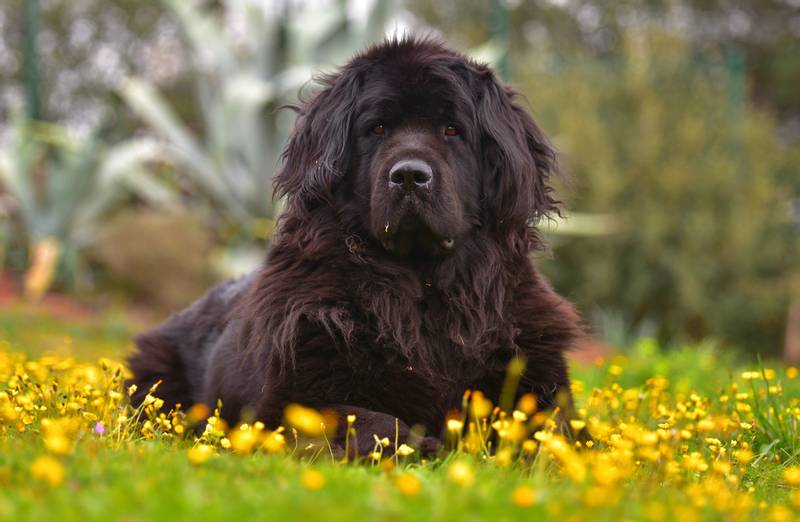
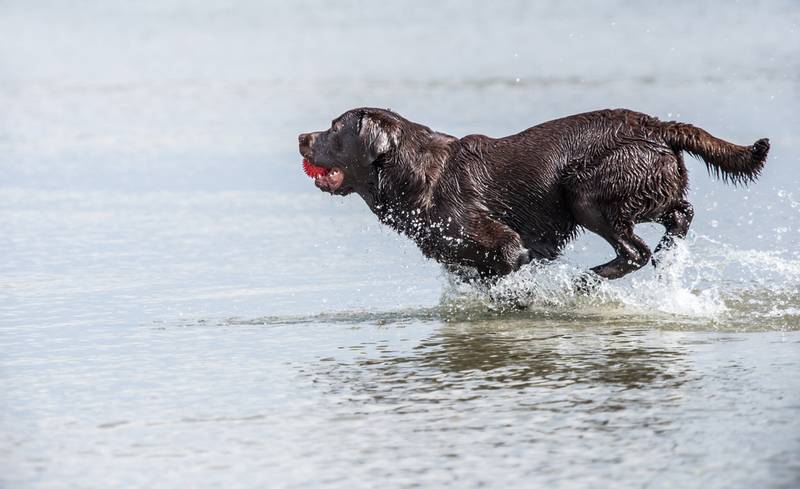
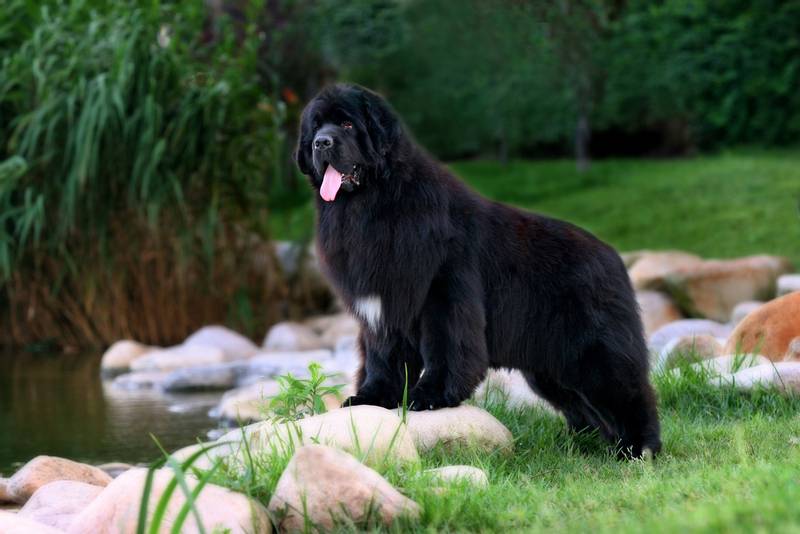
The Newfoundland is a dog you can’t walk past without smiling. Her powerful forms and “bearish”, somewhat intimidating appearance are not able to hide a generous heart and good disposition. Excellent character, self-esteem, incredible kindness, devotion, courage, expressive majestic appearance – these are the virtues that brought these dogs world fame. They are the heroes of many literary works, reports, participants in dangerous expeditions and hostilities. Newfoundland in the family is always an inexhaustible source of joy, warmth and love.
History of the Newfoundland dog breed
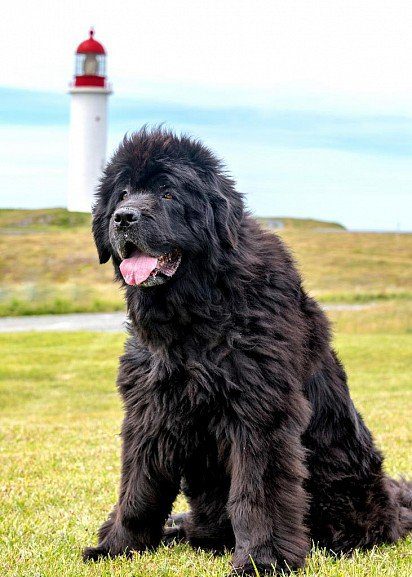
The birthplace of the breed, which shared its name with it, is the island of Newfoundland, located off the east coast of North America and belonging to Canada. There are many legends about the origin of these dogs, and many of them, quite possibly, are not so far from the truth.
Some cynologists suggest that the ancestors of the Newfoundlands are Berenbeitsers, common in medieval Europe, pickling dogs-“bear-fighters”, which are also considered the progenitors of mastiffs. These powerful dogs allegedly came to the island along with a Viking team led by the Scandinavian navigator Leif Eriksson on a ship that arrived off the coast of Newfoundland around the year 1000. Subsequently, the descendants of these animals became wild. When Europeans reappeared here in the 16th century, they were amazed at the sight of huge black and shaggy dogs they met here.
According to the well-known Swiss cynologist, Professor Albert Heim, who specialized in the study of Newfoundlands, these animals descended from Molossians, massive Great Dane-like dogs of the so-called mastiff type, brought to the island by the British during its colonization.
It is believed that among the ancestors of the Newfoundlands are large black and piebald shepherd dogs, who also came across the ocean from the European continent. White Pyrenean mountain dogs are also mentioned, which could be brought to North America by Spanish and Portuguese settlers. It is believed that it was thanks to them that the black and white color of the Newfoundlands arose.
Some cynologists suggest that the formation of the breed was not without aboriginal representatives of the dog tribe. Presumably, already in the 11th century, indigenous tribes lived on the island, who were descendants of the Paleo-Eskimo peoples, whose companions and helpers were sled dogs. Perhaps it was from them that the Newfoundlands inherited their friendly disposition and determination to come to the aid of a person under any circumstances.
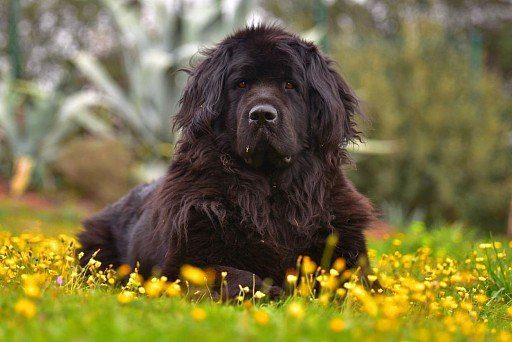
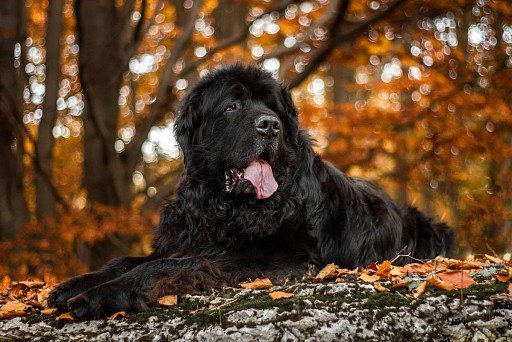
The first descriptions of dogs from the island of Newfoundland began to appear at the dawn of the 18th century. Two types were known: the “Little Saint John Dog” and the “Big Saint John Dog”. “Saint John” or “St. John’s” – the name of the largest settlement on the island at that time, today – the main city of the Canadian province of Newfoundland. The descriptions noted the excellent working qualities of these dogs, their good-natured character, as well as the ability to dive deep and swim far. The British began to export dogs from the island and soon began their systematic selection. The first type was used in the breeding of the retriever breed, and the second became known as the Newfoundland. According to some reports, for the first time, in 1775, George Cartwright named his dog Newfoundland.
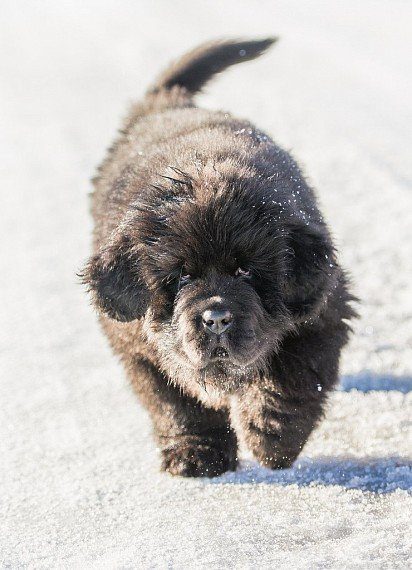
Initially, English breeders selected for mating dogs that had a black and white color, later called Landseers in honor of the British painter Edwin Henry Landseer. He liked to depict such dogs on his canvases. However, over time, breeders began to give preference to animals with a solid black color.
In the middle of the 19th century, a fashion for large representatives of the dog tribe arose in Great Britain. At exhibitions in 1860 and 1862, held in Birmingham, dogs from the island of Newfoundland made a splash, and in 1864 the dog, which belonged to the Prince of Wales himself, took first place at the Birmingham exhibition. In 1878, the first Newfoundland was listed in the stud book of the English Kennel Club – the oldest kennel club in the world – and a year later a breed standard was developed. The magnificent mighty dogs began to rapidly gain popularity in Europe, and in 1885 the first club of Newfoundland lovers was founded in the USA. Today, in eminent kennel clubs in Europe and the USA, you can buy Newfoundland puppies, leading their official pedigree from the 80s of the century before last.
At the beginning of the 20th century, Newfoundlands gained popularity among Russian aristocrats, but the fashion for them did not become widespread. In the 40-50s, representatives of this breed were actively exported to the USSR from Germany. In the nursery of the Ministry of Defense “Krasnaya Zvezda” breeders worked to improve the working qualities of Newfoundlands. They were crossed with German and Caucasian Shepherds, trying to give the dogs aggressiveness and at the same time preserve the instincts of a rescuer in them. These experiments ended in failure, because the dogs, instead of helping the person, showed aggression towards him. In the guard service, the Newfoundlands also did not succeed. In the 80s, breeding work to develop a new breed was stopped, although it managed to get its own name – the Moscow diver.
Since the mid-80s, breeding of imported Newfoundlands began in Russia, and Moscow divers gradually “dissolved” in their livestock. The memory of them is kept by the pedigrees of a small number of domestic Newfoundlands and the tradition of calling this breed of dogs divers. Often Newfoundlands are also referred to as Newfs.
Video: Newfoundland
Appearance of the Newfoundland
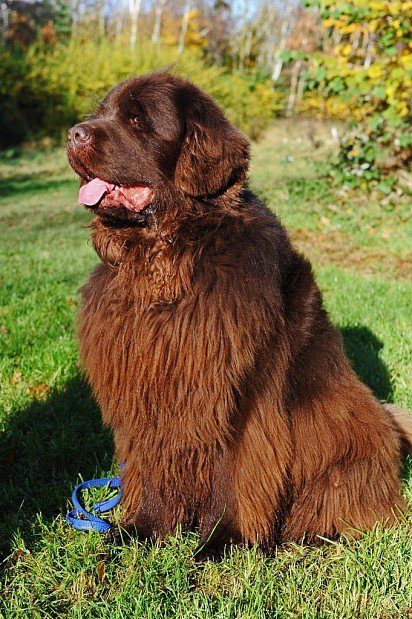
The Newfoundland is a powerful dog of athletic build, whose coat resembles a luxurious boyar fur coat. The huge size of the dog does not make him clumsy and awkward. On the contrary, they perfectly control their own body and look quite elegant. Males can weigh up to 70 kg, females up to 55 kg.
Frame
The body of the Newfoundland is strong, dense, compact. The length of the body from the withers to the base of the tail is identical to the length from the withers to the floor. The back and croup are wide, solid, the loin is strong, muscular, the chest is powerful. The lower line of the chest of the abdomen is almost even. In females, the body is often more elongated and not as massive as in males.
Newfoundland Dog Head
Large, heavy, with a broad skull with a slightly protruding vault. The occipital protuberance is well developed. The stop is distinguishable, but it is not overly harsh. The relatively short muzzle of the Newfoundland has a square shape, it is covered with short soft fur. There are no skin folds on the muzzle. The corners of the mouth are pronounced. Cheeks are soft. The nostrils are well developed. The color of the nose is distinct. In black and white and black dogs it is black, and in brown dogs it is brown.
Jaws and teeth
Jaws are powerful. The teeth look impressive: they are large, white, with pronounced fangs. Scissor bite or straight bite.
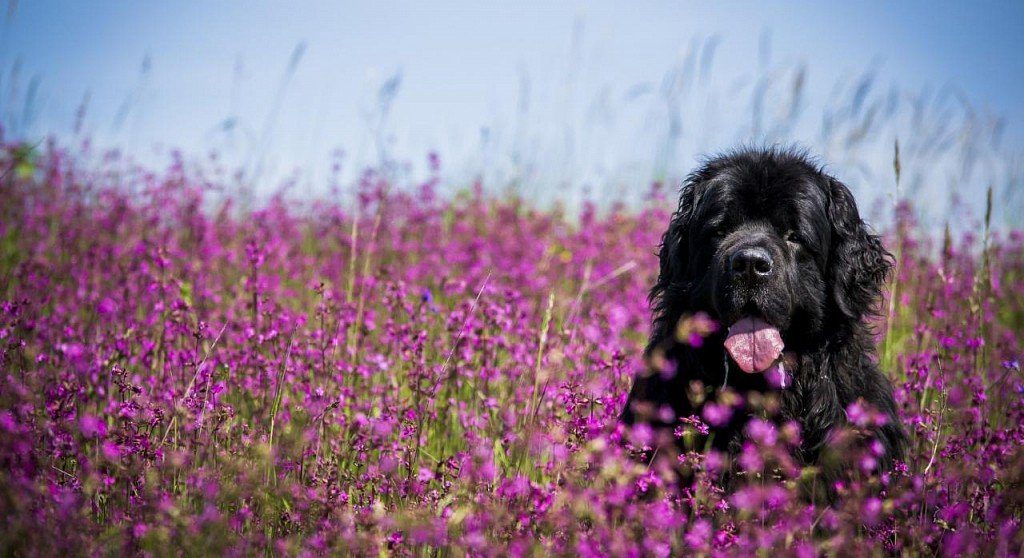
Eyes
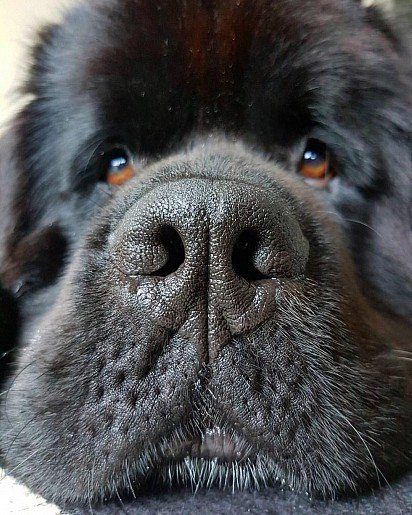
Small, set deep and at a fairly wide distance from each other. The eyelids should not droop and expose the reddish conjunctiva. In black and black and white Newfoundlands, the eyes should be dark brown, in brown animals there may be a lighter tint.
Newfoundland Dog Ears
The ears of the Newfoundland are small, set closer to the back of the head, triangular in shape, rounded at the tips. If the ear of an adult Newfoundland is pulled forward, its end should reach the inner corner of the eye, which is located on the same side of the head.
Neck
Powerful, muscular, without pronounced dewlap. It is long enough to provide a majestic fit for the head.
Newfoundland Dog limbs
The front legs of the Newfoundland should be straight. They remain parallel even in those cases when the dog paces measuredly or moves at a leisurely trot. The shoulder muscular system is well developed, the shoulders themselves are set back. The pasterns are slightly sloping. The hind limbs are expressively powerful, with excellently developed femoral muscles. Legs strong, elongated. The hind pasterns are short, set low and wide, they are parallel to each other, do not protrude either inward or outward. The feet of the paws of the Newfoundland are large, commensurate with the body. They are rounded and look gathered into a ball. The fingers are hard, compact, tightly closed, they are connected by swimming membranes. The claws of divers of black and black-and-white color are black, for brown dogs the horn color of the claws is characteristic. If the dog has profitable fingers, they should be removed.
Tail
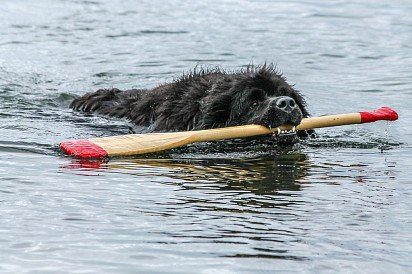
The tail of the Newfoundland is thick, wide at its base. When a dog swims, it acts like a rudder. In a standing animal, the tail is slightly lowered, a slight bend is noticeable at its end, it descends approximately to the hock joint, sometimes a little lower. When the animal is in motion or in a playful mood, the tail is held high, then it is slightly curved upwards. The tail is not allowed to be thrown over the back or tucked between the legs.
Traffic
Newfoundland moves sweepingly, demonstrating tirelessness and power. The back remains straight during the movement. In the process of running, with increasing speed, the dog tries to put its paws closer to the midline.
Wool

Both the coat and the undercoat of the Newfoundland are oily, waterproof, smooth, thick, and hard in texture. Wool has a water-repellent effect. The guard hairs are fairly long and straight, with no curls, but slight waviness is acceptable. Soft, dense undercoat becomes even thicker in winter, especially in the croup and chest area. The tail of the dog is covered with long thick hair, the head, muzzle and ears are short and soft. The limbs are decorated with feathers.
Newfoundland Dog Color
The classic color is black. It is desirable that the color be as intense as possible; when fading in the sun, a brownish tint is acceptable. For the brown color of the Newfoundland, shades are allowed: from chocolate to bronze. In these two monochrome colors, white markings on the chest, toes, tip of the tail are acceptable.
For a black and white color, the following option is most preferable: a black head with a white blaze that goes down to the muzzle, black spots on the saddle, in the area of the croup and the base of the tail. The dominant coat should be white.
Flaws
- Lightweight body with light bones giving the impression of looseness.
- Hunched, soft or sagging back.
- Pointed or simply elongated muzzle.
- Round or protruding eyes, their yellow color, naked conjunctiva.
- High limbs. Weak pasterns, loose paws on the forelimbs, straightened knee angles and turned inside paws on the hind legs. Absence of membranes connecting the fingers.
- Excessively short or elongated tail, or broken, twisted at the end.
- Minced, shuffling or unsteady gait, sideways movements, short steps, crossing of the forelimbs in the process of movement.
Newfoundland photo
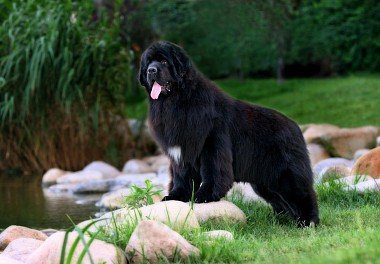
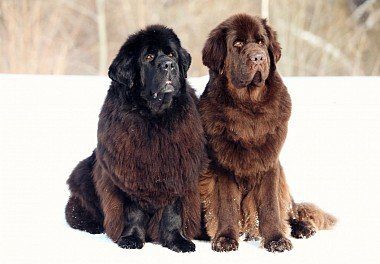
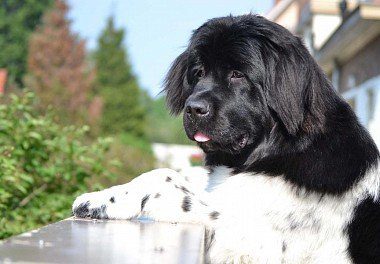
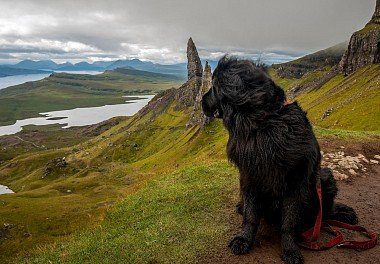
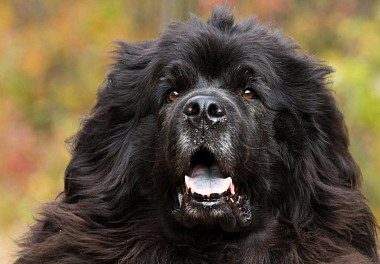
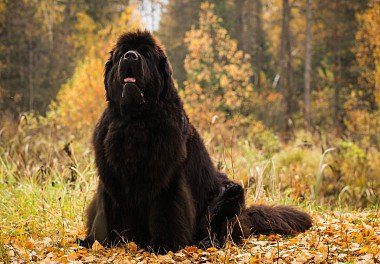
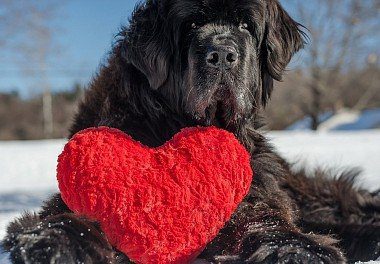
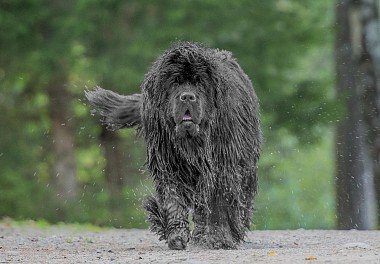
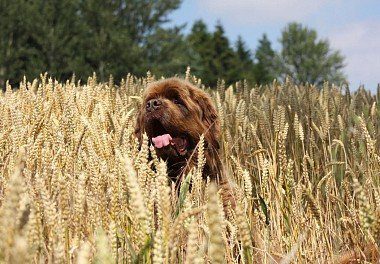
Newfoundland character
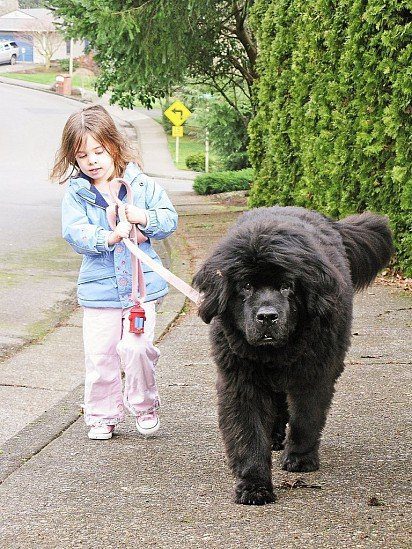
The Newfoundland is called a dog with a “golden” character. He is kind, devoted, friendly, tactful, not at all disposed to aggression. Using the terminology of psychics, we can say that he has a good biofield. The very presence of this good-natured giant in the house creates an atmosphere of comfort, security and benevolence.
Perhaps the Newfoundlands are the most socialized dogs in the world, the main purpose of their existence is to serve a person. They are selflessly heroic and ready to help at any moment. They give themselves completely to the work entrusted to them – whether it be police or military missions, escorting the blind and even transporting goods. No wonder one of the paintings by the British artist Edwin Henry Landseer, which depicts the Newfoundland in all its glory, is called “A worthy member of human society.”
Divers demonstrate their excellent character traits from early childhood. Kids are not at all capricious, they quickly become attached to the owner, but they do not bother, demanding increased attention to themselves, they do not whine and do not bark for no reason.
Adult dogs are incredibly smart and practical. You can even say that they have an analytical mind and have their own opinion on any issue. Commands that seem meaningless to them, they can simply ignore or execute in their own way. But in order to rush to the aid of a drowning man, this dog does not need a command at all – it will selflessly throw itself into the water in any case. Clearly and confidently Newfoundlands act in dangerous situations, for this they also do not need special instructions. Actually, innate intelligence and the ability to independently and quickly make the right decision under the circumstances is a hallmark of the outstanding intelligence of these animals.
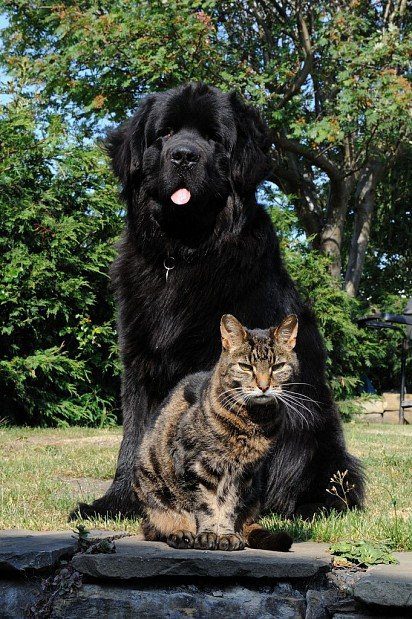
Newfoundlands are well versed in the intonations of the human voice and can easily determine what mood the owner is in. They understand when they need to be supported by being nearby, or they are removed from sight. Very polite by nature, Newfoundlands are very sensitive to rudeness towards themselves. The dog, like a person, is offended when they shout at him, and after a quarrel, he closes in on himself for a while, refusing to communicate with the offender.
Newfoundlands are not the best watchmen, because all people are initially friendly and open to communication. An instant aggressive reaction to a stranger should not be expected from them, since these dogs are not inclined to sharp and thoughtless actions, and they need some time to analyze the situation. Sensing danger, they first warn the enemy with a formidable bark, and then furiously attack him with all their remarkable power.
Newfoundlands love family picnics. In the car, they behave sedately and do not worry. Playing in nature, especially near water bodies, where they can swim to their heart’s content, brings these dogs incredible pleasure. Parents can be calm for the kids if there is a vigilant Newfoundland next to them. He will gladly take part in children’s amusements, but he will stop risky pranks – on his own or by loud barking he will notify others about the danger.
The Newfoundland is a monogamous dog. Having given his heart to one family, he will forever remain faithful to her. Having changed owners for some reason, the dog will be polite with them, but he will not be able to get rid of longing for his home. It will be difficult for new owners to establish a trusting relationship with such a pet.
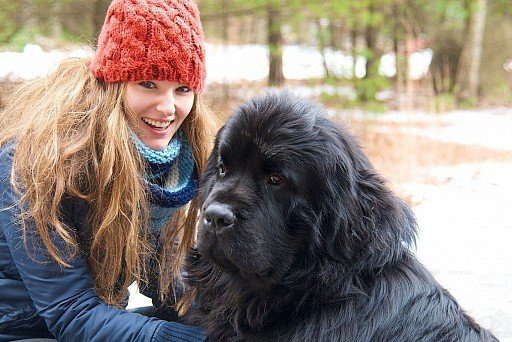
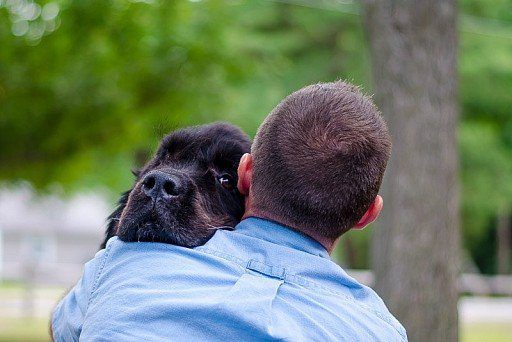
Newfoundland Dog Education and training
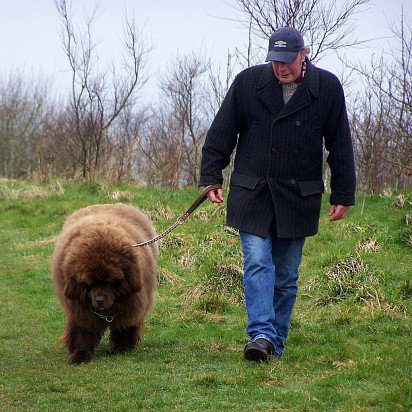
The apprehension and excellent memory of the Newfoundland turn ordinary training into a pleasant pastime. The dog grasps everything on the fly and often, without listening to the end of the task, starts to carry it out. Commands to this dog should be given in a calm tone, without raising your voice. She simply will not respond to demanding orders and screams. Actually, this is not required: it is enough for a Newfoundland to ask politely and gently for something, and he will readily respond to any wish.
Care and maintenance
Newfoundlands feel great both in nature and in urban environments: they are not afraid of either busy streets or traffic. Small apartments are not the best place to live for these giants, but medium-sized housing is quite suitable for them, because dogs with a calm disposition do not have the habit of running around the apartment, sweeping everything around. In the house, the Newfoundland should have its own place where he will sleep or just relax. It is desirable that it be spacious and have an orthopedic base, for example, it can be a small mattress. It should be covered with a cloth that is easily erased, as these dogs have profuse salivation.
Newfoundlands are not playful and tend to be passive, but they need exercise. These dogs should be walked at least twice a day, preferably in the morning and evening.
The ideal place to keep a Newfoundland is a country house, near which there is a pond, lake or river. Aviary content is not suitable for a diver – deprived of communication with people, he will yearn. Moreover, you can not put him on a chain.
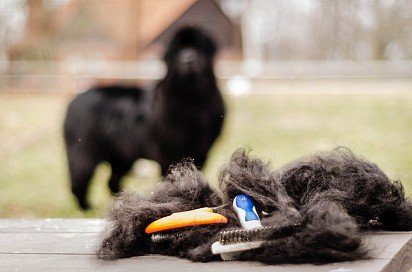
The dense wool of the Newfoundland requires systematic care. You should brush your dog at least three times a week with a stiff brush, otherwise his hair will mat and form tangles that can poison your dog’s life by causing itching. If a tangle has already formed, it is better to unravel it. They are cut out in extreme, completely neglected cases. Twice a year, in autumn and spring, the Newfoundland’s undercoat is updated. During this period, the dog needs to be combed every day. To help your pet, you can also contact the grooming master, who will make it easier to cut.
Newfoundlands do not require frequent bathing, because their wool, impregnated with natural lubricant, repels dirt and water itself. The use of shampoos is very bad for the condition of the coat.
The Newfoundland’s nails need to be trimmed once a month. It is required to monitor the ears and eyes, systematically checking them for the presence of secretions that may indicate infectious diseases. Periodically, the ears and eyes should be wiped with a damp cloth.
Feeding Newfoundlands should be taken seriously. It should be balanced, plentiful, but in moderation, as these dogs are prone to obesity.
With natural feeding, the following foods should be in the dog’s diet:
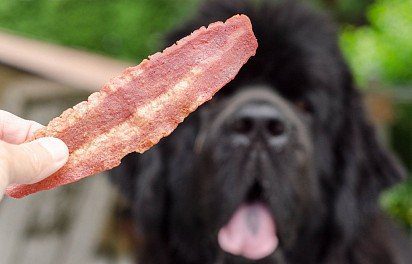
- veal, beef, lamb, rabbit meat (50% of the total number of products). It is not recommended to feed them with pork and poultry meat;
- from cereals – oatmeal and buckwheat, and it is better to exclude rice, pearl barley, millet;
- sea fish – raw or boiled, river – exclusively boiled;
- cottage cheese;
- carrots, in small quantities – beets and cabbage, parsley, nettle, dill, lettuce scalded with boiling water;
- bread in the form of crackers.
Potatoes, spicy and smoked foods, sweets, especially chocolate, are prohibited in the feed.
The Newfoundland diet can include ready-made, high-quality super-premium and holistic foods.
Puppies should be fed 5 times a day, as they grow older, the number of feedings decreases. For adult dogs, it is enough to give food twice a day.
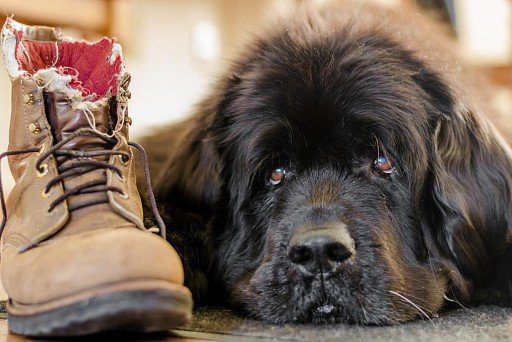
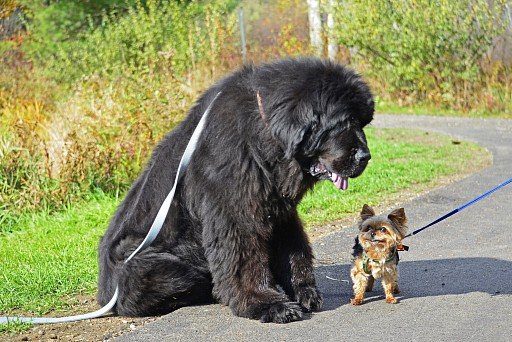
Newfoundland health and disease
Newfoundlands are characterized by a number of diseases, both common to all dogs and peculiar to this particular breed. Their massiveness creates problems for the musculoskeletal system, they often develop arthritis and hip dysplasia. A sedentary lifestyle, lack of activity can lead to obesity and, as a result, to heart disease.
A native of the north, the Newfoundland suffers from the heat and is at risk of heatstroke. Its main signs are lethargy, dry warm nose, lack of appetite. On hot days, you need to ensure that the dog always has water in the bowl. Under no circumstances should you leave your dog in a closed car. In summer, it is desirable to give the diver the opportunity to swim more often.
How to choose a puppy of Newfoundland Dog
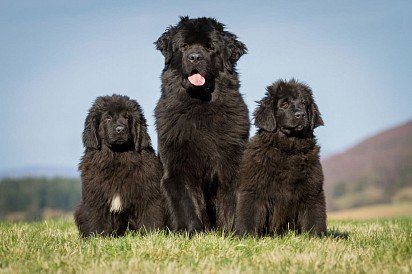
Newfoundland puppies, of course, need to be bought from a kennel or from a breeder whose integrity you are sure of. In this case, you will have guarantees that the baby is thoroughbred, has all the necessary vaccinations. In the nursery you will be able to get acquainted with his mother, and, if you are lucky, with his father. This will give you the opportunity to get an idea of what your grown-up “bear” will look like.
According to the rules of the RKF, breeders have the right to sell puppies after they turn 45 days old. But many people prefer to buy babies who have already received all the vaccinations, that is, at the age of 3-3.5 months. In this case, it will already be possible to walk them without fear. Those who want to buy a puppy for breeding should wait until he is 6-9 months old, when his anatomy and behavior will be obvious.
The small Newfoundland should have a well-proportioned build and be a tiny replica of an adult dog. The puppy is supposed to be active, curious, moderately well-fed. His coat should be shiny and clean, without tangles, the bite should be correct.
Photo of Newfoundland puppies
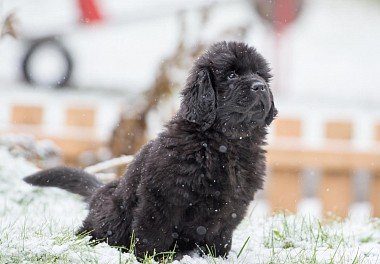
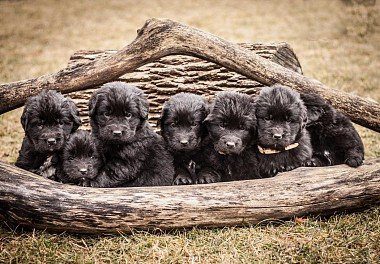
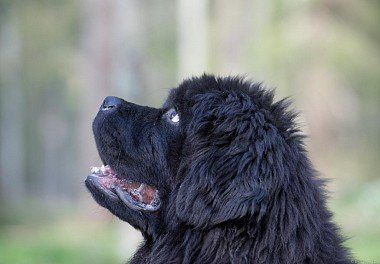
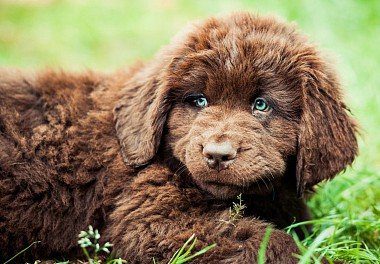
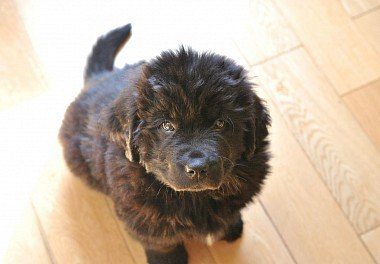
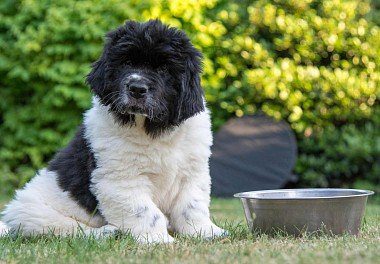
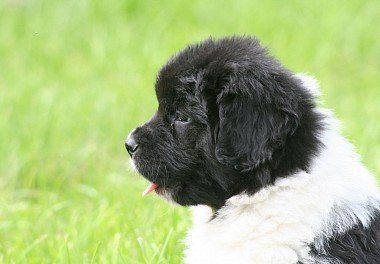
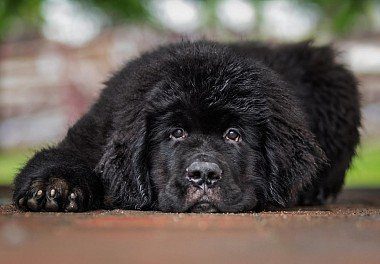
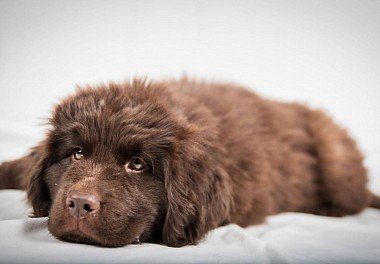
How much is Newfoundland
Prices for Newfoundland puppies vary from 300 to 1900$ and depend on a number of nuances: titled parents, fame of the kennel, age, and the presence of deviations from the breed standard.
Show-class puppies with the prospect of making an exhibition career, as well as those babies that, according to the breeder, can be used for breeding, are valued above all.
Newfoundland Dog – Video





